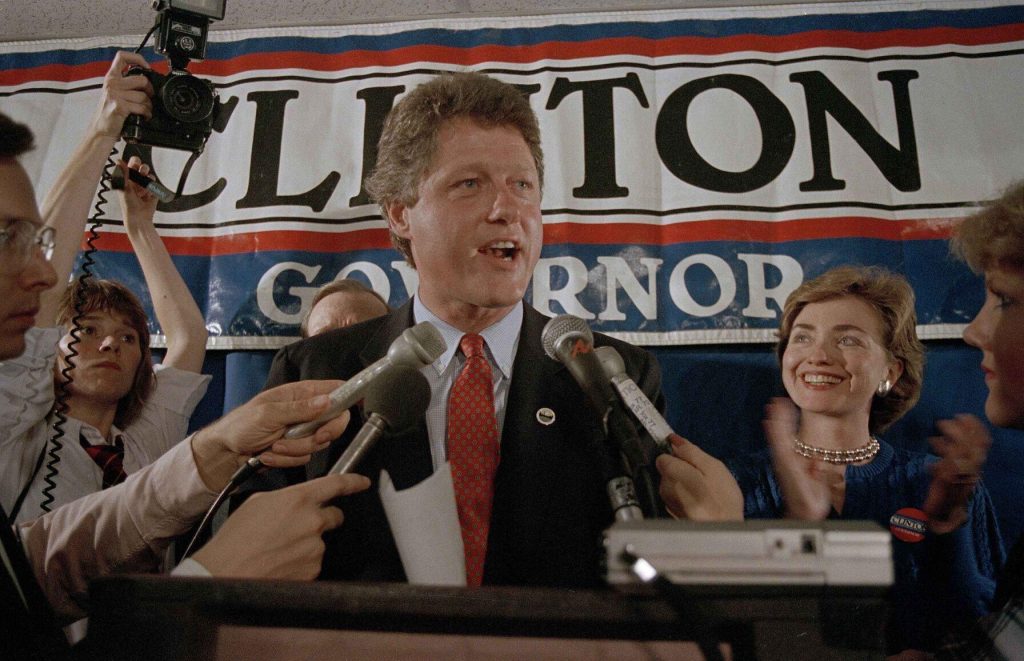
Clinton Covered Up for the Mena Affair and a Corrupt Old-Boy Smuggling Network That Helped Flood the Country with Cocaine in the 1980s
[The War on Drugs is now widely recognized as a failed public policy that has resulted in mass incarceration and the over-militarization of American police forces. This article provides a historical lens on that failure, going back to the time when Bill Clinton, a key architect of the modern War on Drugs with Ronald Reagan and Joe Biden, was governor of Arkansas.—Editors]
Jean Duffey is a kindly 76-year-old grandmother living in Siloam Springs, Arkansas, who has a story to tell that is fit for a John Le Carré spy novel or John Grisham crime caper.
The story begins in 1990 when as a 43-year-old deputy prosecutor in Saline County, Arkansas, just north of the capital, Little Rock, Duffey was asked by Prosecutor Dan Harmon and his assistant, Richard Garrett, both Democrats, to head a drug task force for Saline, Hot Springs and Benton counties.
Very quickly, as she told CovertAction Magazine in an exclusive interview, the task force began to unearth evidence exposing deeply rooted, drug-related corruption that went all the way up to Harmon’s office and that resulted in the cover-up of murder.
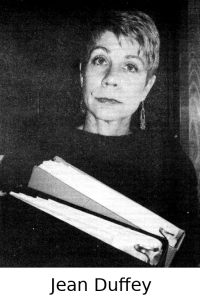
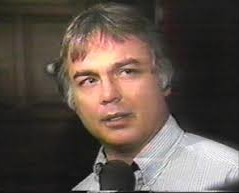
Three years before the task force had been initiated, on August 23, 1987, two local teenagers, Kevin Ives and Don Henry, were found dead on the train tracks around Alexander near Little Rock.

State Medical Examiner Fahmy Malak advanced the theory that the boys fell asleep on the tracks after smoking 20 marijuana joints and were run over by a train accidentally. However, an independent investigation revealed that the boys had been beaten to death before-hand and their bodies then laid out methodically on the train tracks under a tarp before they were run over.[1]
An eyewitness that passed a polygraph test identified two law enforcement officials, believed to be Jay Campbell and Kirk Lane, who was incredibly appointed in 2017 as Arkansas’ drug czar, beating the boys before they were killed.

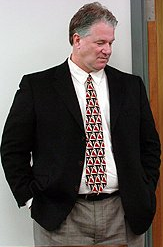
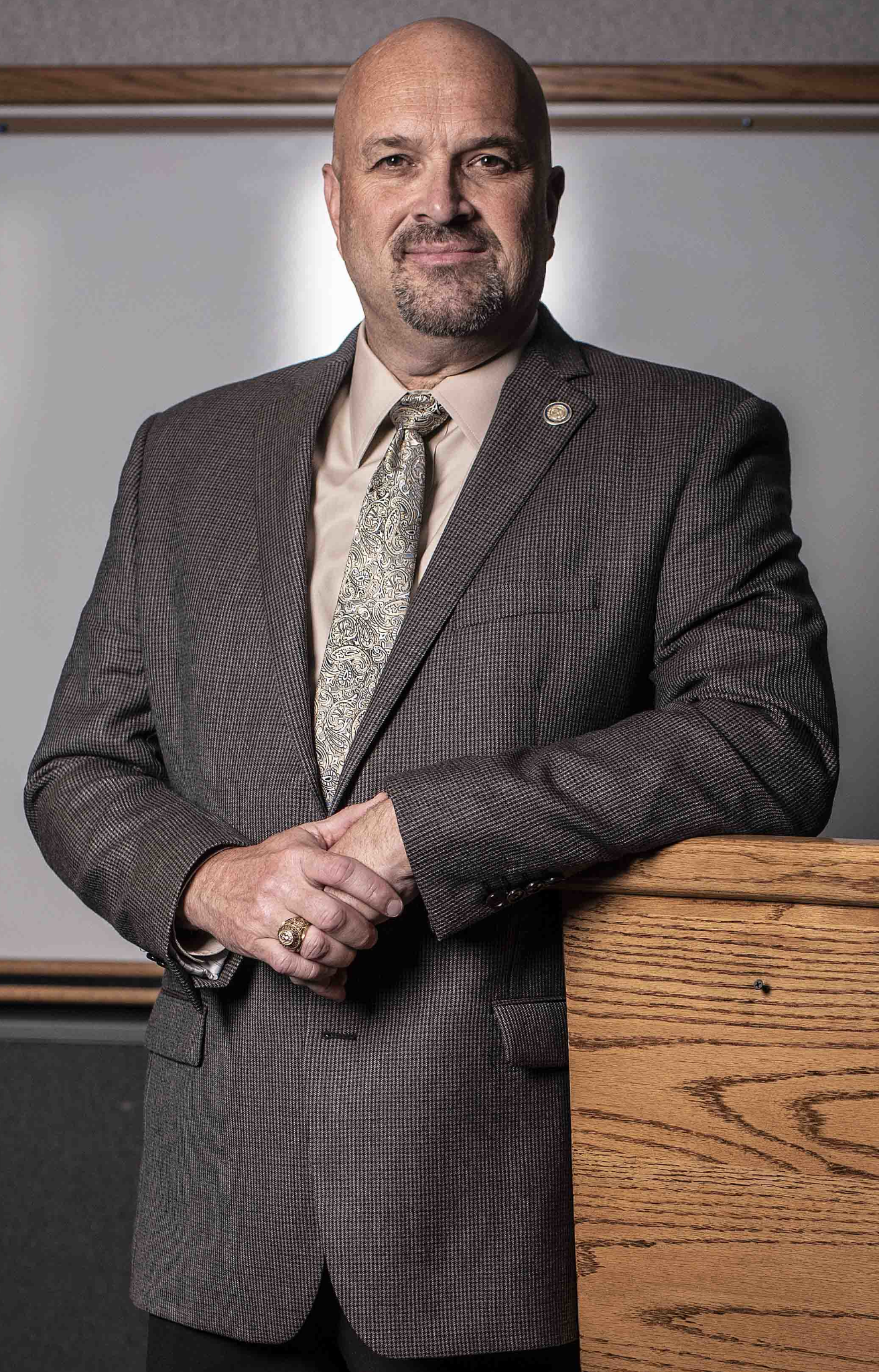
Duffey’s task force determined that the boys were probably killed because they had witnessed cocaine drops or cash, gold or platinum payments or the theft of it as part of a massive criminal operation.
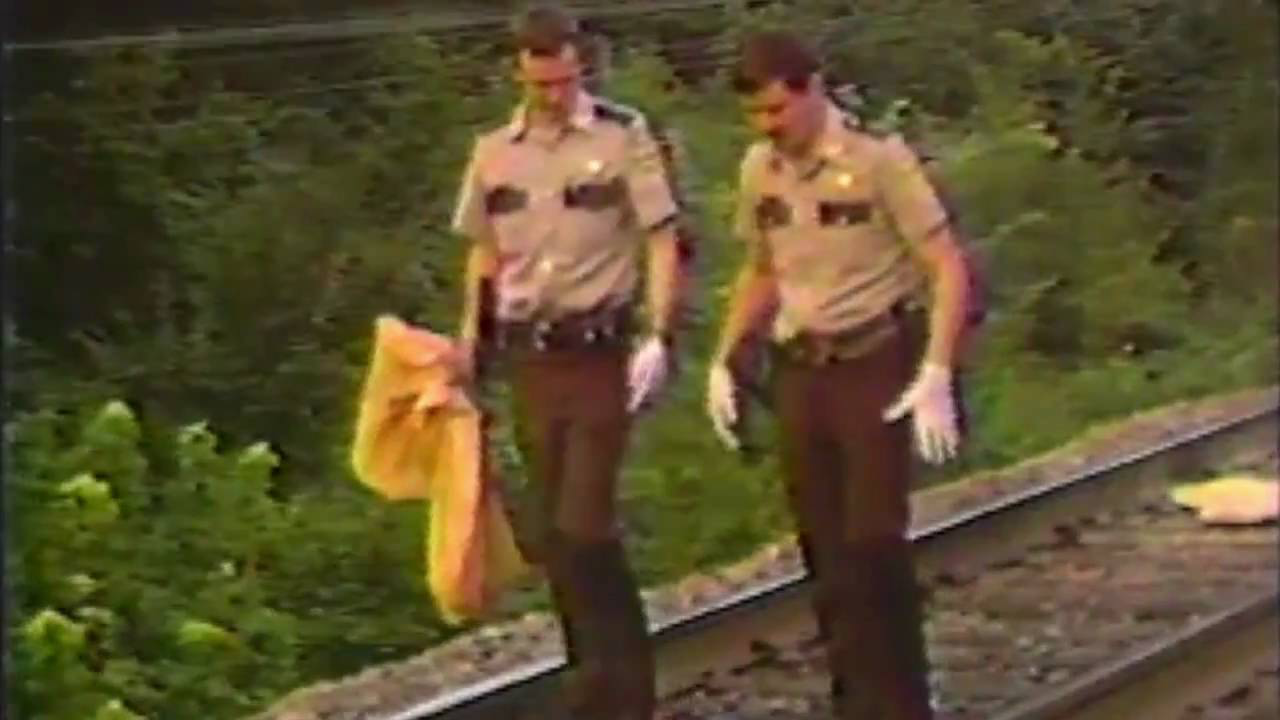
A pilot living in Amarillo, Texas, who went by the pseudonym Joe Evans, told one of Duffey’s investigators that he would drop the drugs he was carrying at the Shobe Road crossing near where the boys were killed when he saw the railroad lights.
Kevin’s father, Larry, had worked as a railroad man, and said that Evans described the lights exactly the way they were, along with other details about the area that could only have been known by someone who was there, meaning he was telling the truth.[2]
Another key witness for Duffey’s task force was Sharline Wilson, a girlfriend of Harmon and Bill Clinton’s half-brother Roger, who was supposed to make a drug pick-up that night but was too high and so waited in the car. She stated that Harmon was present when the boys were killed and that they were killed by police.[3]
Wilson’s story was corroborated by another witness, who was subsequently placed in protective custody, who said that he/she saw Dan Harmon on the railroad tracks the night the boys were killed talking with someone, and that the boys came just after.
With enough evidence to go after Harmon and other corrupt officials, a grand jury was set up by Judge John Cole to investigate the deaths of the boys on the tracks. However, the investigation was headed by none other than Dan Harmon and was part of a diabolical scheme to kill off the key witnesses, who were murdered one by one thereafter.

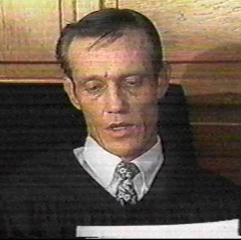
The victims included a local bar owner named Keith McKaskle, who passed on information to Police Deputy Cathy Carty, the only Saline County deputy on the tracks the night the boys died, who strongly disagreed that the deaths were an accident, and Greg Collins, 26, who had been with the boys on the night of their deaths and was subpoenaed in the case.[4]
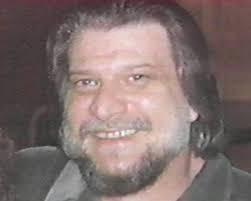
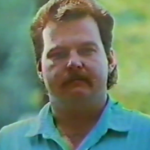
Harmon—who was convicted in 1997 on drug-racketeering charges and sentenced to 11 years in prison after his wife was found with cocaine taken from police custody[5]—prevented the grand jury from ever revealing its findings and made sure that no one was ever charged with the murders.
After Sharline Wilson identified Harmon at the crime scene, Harmon staged a raid on her house and she was then given a draconian 31-year prison sentence after less than $100 worth of marijuana and methamphetamines was found in her house (Wilson says the drugs were planted by Harmon).[6]
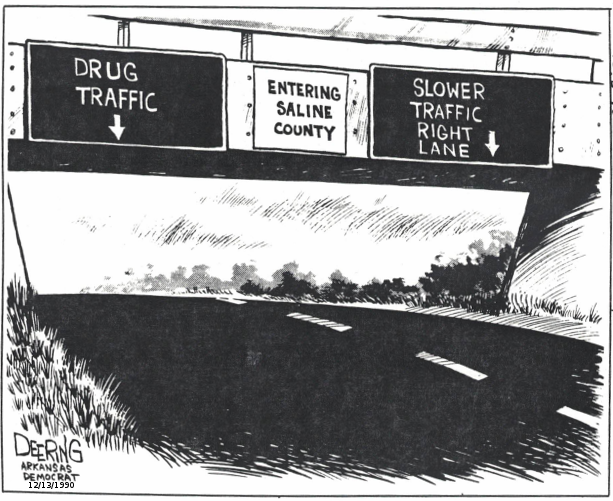
Jean Duffey had been warned by her supervisor, Gary Arnold, not to investigate any public officials for drug trafficking when the drug task force was first set up.
Because she had crossed the “old boys network,” she was fired on a fraudulent pretext after a woman named Kathy Evans forged checks in her name to make it look like she was embezzling money.[7]
Duffey was also smeared in the local media, which made Harmon out to be a hero, issued bogus felony warrants, and forced to flee Arkansas and go into hiding out of fear for her safety, with a $50,000 contract placed on her life.[8]
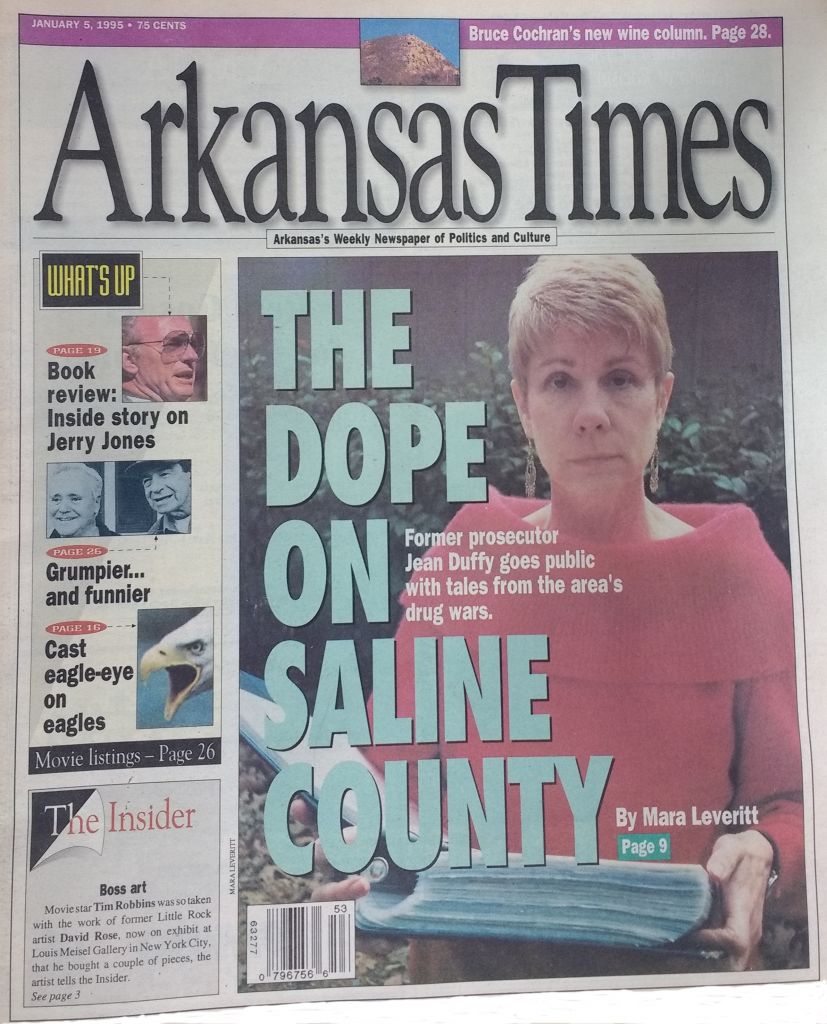
A two-year-long federal grand jury investigation headed by Assistant U.S. Attorney Robert Govar into corruption in Saline County was shut down by his boss, U.S. Attorney Chuck Banks, who was rewarded with a federal judgeship nomination by President George H.W. Bush.
The FBI contributed to the cover-up, sending Special Agent in Charge I.C. Smith from Washington to head the Little Rock office in 1995 to squelch the investigation into the murders of the boys on the tracks.
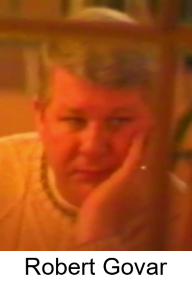
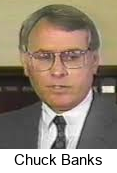
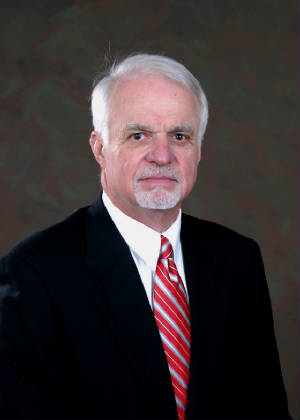
Bill Temple, the FBI’s #2 man in Arkansas, told Duffey and Kevin’s father Larry that “it was time we considered the fact that a crime had not been committed.”
But of course it had, and the perpetrators have never been punished.
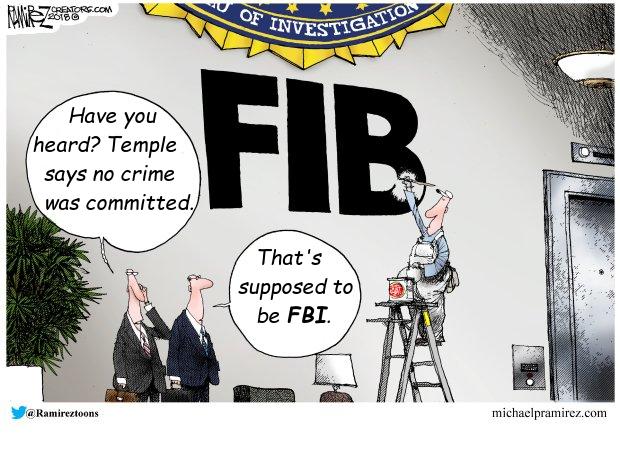

Heyday of the War on Drugs
Duffey’s drug task force had received federal funding as part of an aggressive drug war strategy adopted by George H.W. Bush, which built on the precedent of Ronald Reagan.
Arkansas at the time was run by Governor Bill Clinton (1979-1981; 1983-1992) who, despite a liberal veneer, was a southern law-and-order conservative who ramped up the War on Drugs in Arkansas and then the nation at large when he became president.
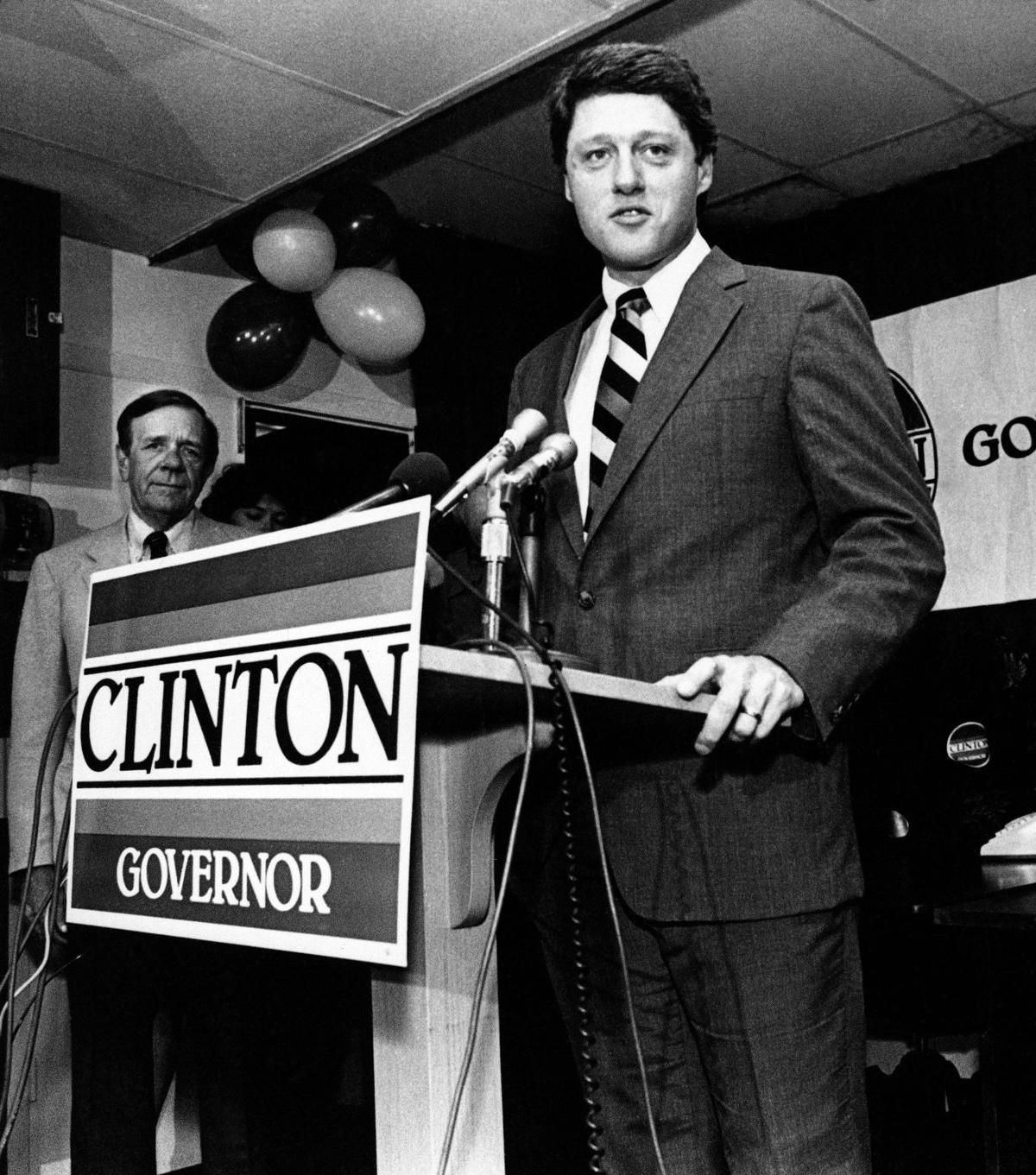
Penalties for drug-trafficking offenses were strengthened during Clinton’s governorship, and Clinton doubled the number of personnel involved in efforts to stop illegal drug use in Arkansas.
Clinton also enacted a program with the Arkansas State Police in which random stops of suspicious vehicles were made on state highways in an effort to seize drugs.
In November 1989, Clinton bragged in a letter to a civil servant, Mary Lingo, that Arkansas was ranked among the top five states in the country in the value of drugs seized, and he said that he was working diligently to challenge a state Supreme Court ruling that restricted his anti-drug policies.
Clinton also told Lingo that he had requested and received permission to use the Arkansas National Guard in an effort to wipe out drugs in Arkansas and that Arkansas National Guard helicopters flew thousands of hours of missions to spot marijuana crops and destroy them.[9]
The marijuana eradication campaign resulted in the destruction of 75,000 marijuana plants in 1990 and one million plants overall valued at around $1 billion.[10]
In May 1991, Clinton requested that the Pentagon donate C-26 aircraft for his drug interdiction/eradication program, which was largely popular among Arkansans at the time.[11]
Lingo in her exchange with Clinton blamed politicians for “appeasing the criminal element in society,” and said that Clinton’s new drug czar should hire Special Forces veterans to go after pushers.
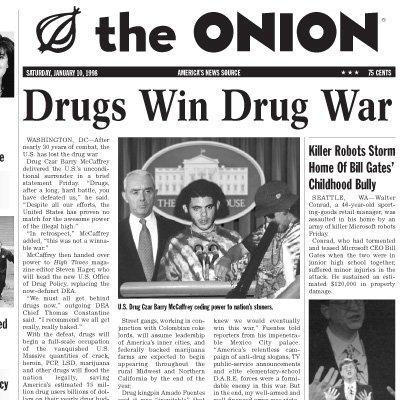
Claiming that the American Civil Liberties Union (ACLU) and Supreme Court had sold the country out, Lingo asked: “What is wrong with using some flamethrowers on the grass plants located?” She added: “If we can’t use the military to wage war against an enemy within, then something is very wrong.”[12]
What Lingo and many other Arkansans did not know was how compromised the War on Drugs was because of the corruption of local law enforcement and state officials.
A “Nose Like a Vacuum Cleaner”
This corruption extended to Clinton’s family: His half-brother Roger was convicted in January 1985 on six counts of drug dealing and conspiracy, though Bill helped him secure a light two-year sentence.
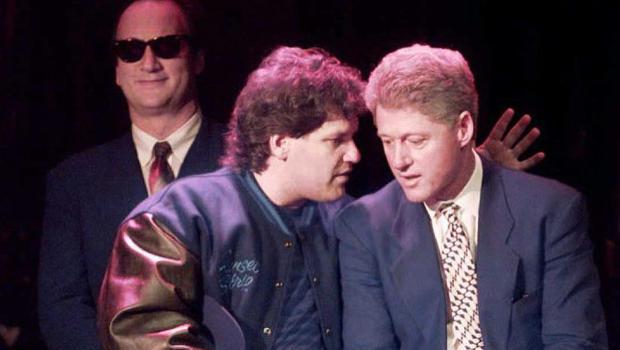
Roger had worked as the driver of Dan Lasater, Bill’s closest and most important political contributor in the 1980s, whom the FBI considered a major player in the cocaine-trafficking network of the Dixie mafia, and was convicted of drug trafficking, though pardoned by Bill.
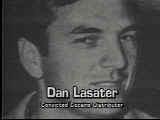
Bill publicly insisted that he never knew that Roger had tried drugs. But Roger’s drug involvement was impossible to miss as he sang in a rock’n roll band entitled “Dealer’s Choice.”
Roger was also caught on a police videotape saying he needed to get some cocaine for Bill who “had a nose like a vacuum cleaner.”
The manager of Roger’s apartment complex, Jane Parks, said she had seen and overheard Bill and Roger taking drugs together during drug-sex orgies where they brought in young, high-school age girls.[13]
Mena
Duffey has grounds to believe that the murder of the boys on the tracks was tied with the cover up of a major clandestine drug smuggling operation out of Mena in the southwestern corner of Arkansas that was connected to CIA efforts to arm right-wing counter-revolutionaries in Nicaragua (Contras) whom the Reagan administration had organized to sabotage Nicaragua’s socialist government, which had come to power in a 1979 revolution.
Joe Evans, the pilot that her task force interviewed who carried out drug drops, was a CIA pilot who had worked on Barry Seal’s planes at the Mena Intermountain Municipal Airport as an employee of Louisiana aircraft. Seal was a legendary CIA and drug pilot featured in the 2017 film America-Made starring Tom Cruise. Evans told Duffey’s investigators that he took orders from CIA operatives out of Mena—who smuggled arms to the Contras and brought drugs into the U.S.—when he was dropping drugs over Saline County.[14]
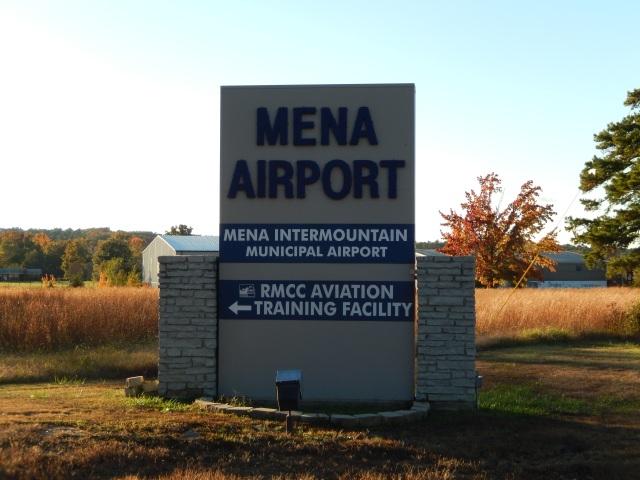
Planes from the CIA-linked Evergreen Aviation were found parked at the Mena Airport, where one of the hangars was owned by Carben Industries—which was run by CIA pilot Michael Palmer and whose board of advisers included CIA operatives Oliver North, Richard Secord, and CIA Station Chief in Costa Rica Joe Fernandez, all key players in the Iran-Contra affair.[15]
Another key figure was Seal, who in the 1960s had flown for an elite combat unit of the Army National Guard used for covert operations and turned to illicit drug smuggling in 1972 when federal authorities in Shreveport caught him loading a transport plane with almost seven tons of plastic explosives bound for anti-Castro operatives trained by the CIA in Cuba.[16]
Seal is estimated to have brought at least 36 metric tons of cocaine, 104 tons of marijuana and 3 tons of heroin into the U.S., totaling between $3 and $5 billion in value, dropping a lot of it off in parachutes in the forests surrounding Mena.
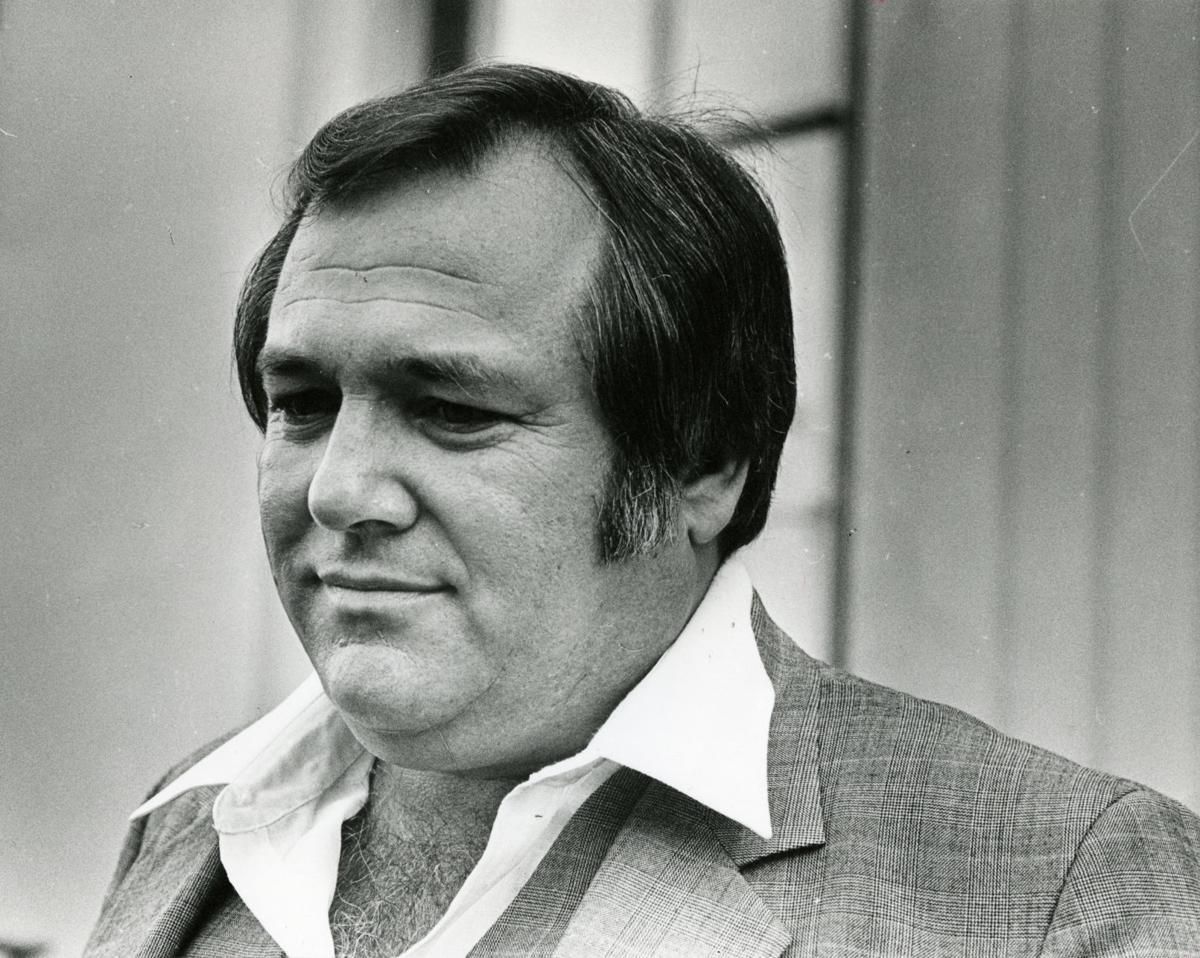
CIA pilot Richard Brenneke told IRS Agent Bill Duncan that, starting in 1984, he flew about a dozen missions to Mena in C-130s, some of which involved flying weapons to Panama where they were unloaded by men serving Panamanian leader Manuel Noriega, a key conduit of supplies to the Contras.
Brenneke claimed that he sometimes returned to Mena carrying unmarked boxes weighing up to 600 pounds that he later learned contained cocaine.[17]
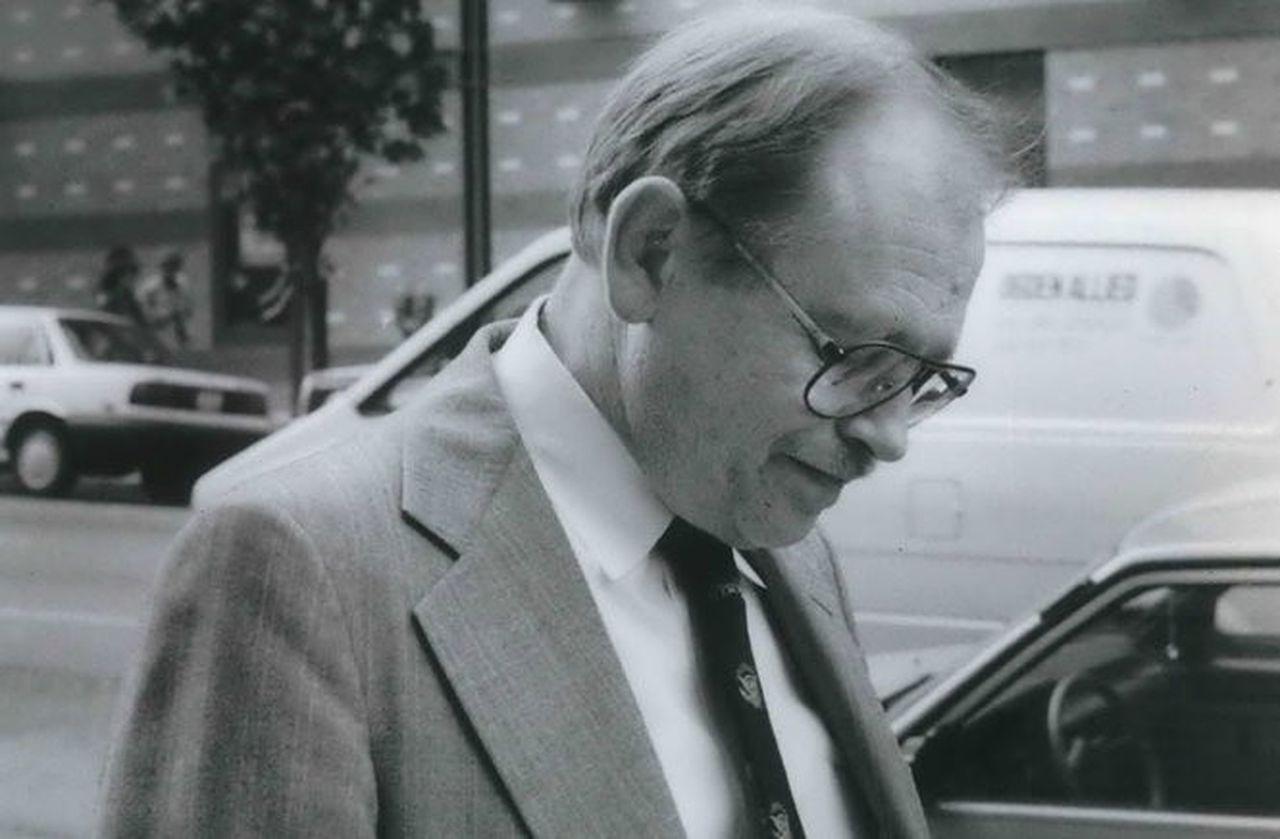
Bill Clinton and Cover-up
Clinton was a backer of the Contras, which had been mobilized by the CIA to terrorize Nicaraguans and violated international law when they mined Nicaraguan harbors.
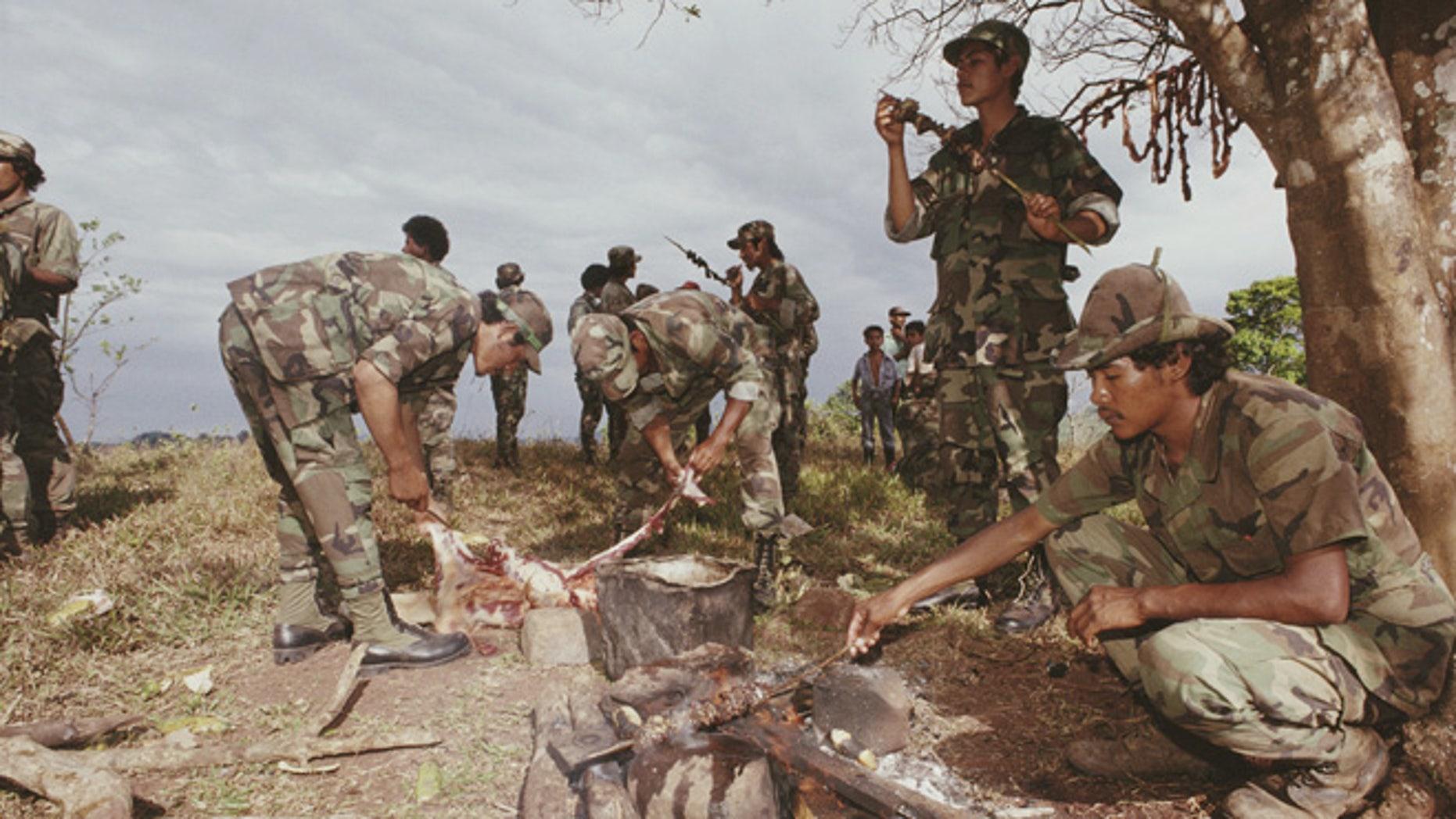
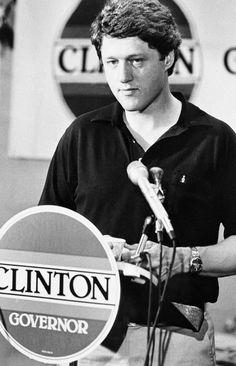
Clinton deployed the Arkansas National Guard on a joint military training mission in Honduras on Nicaragua’s border, sanctioned the training of Contra operatives in Arkansas, and transformed the area around Mena into a hub for companies producing weapons and weapon parts along with electronic components used in weapon systems.
Iran-Contra whistleblower Al Martin alleges that Clinton took a kickback from Arkansas Beltway trucking, which was paid to transport weapons from Ft. Campbell, Kentucky, to Mena that were smuggled to the Contras on clandestine flights.[18]
Drug money was laundered through the Arkansas Development Finance Authority (ADFA) via the brokerage house of Dan Lasater in the First National Bank of Mena and Worthen Bank, which was owned by two other major Clinton donors, Jackson Stephens and Mochtar Riady,[19] and in which the Rose Law Firm—in which Hillary Clinton was a partner—held stocks in (Rose Law Firm head Joseph Giroir was on its board of directors).

Governor Clinton’s protection helped these banks evade the Bank Secrecy Act of 1970, which required currency transaction reports to be filed in connection with cash deposits of $10,000 or more at banking institutions.[20]
The Federal Reserve tellingly reported a 700% increase in such transactions between 1985 and 1989. Under Clinton, Arkansas led the nation in cash surplus gains—a figure considered a reliable reflection of the amount of money being laundered. Cash deposits in Arkansas banks also tripled, suggesting huge amounts of drug money being moved.[21]
While Clinton claimed he was unaware of any problems at Mena until 1988, his bodyguard L.D. Brown’s daybook records Clinton visiting Mena on May 21, 1984.[22] Many people also reported seeing him at Mena Airport, and Clinton’s Chief of Staff, Betsey Wright, admitted that “the Governor’s office had in the early 1980s received repeated calls about drug trafficking there [in Mena].”[23]


A U.S. Senate subcommittee in 1989 called the available evidence about Mena sufficient for indictments; Bill Clinton, however, ensured that this never happened.
Nine state and federal probes—headed by IRS agent Bill Duncan and “Razorback Columbo” Russell Welch, an Arkansas police investigator who had served as an army medic in Vietnam—were halted under higher orders. Welch was subsequently diagnosed with anthrax poisoning after a plot on his life.[24]

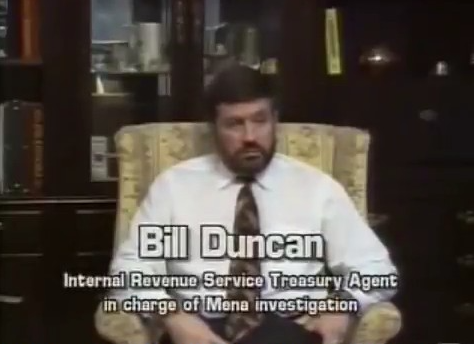
Duncan told a House subcommittee in 1991 that he had collected evidence detailing a “bizarre mixture of drug smuggling, money laundering and covert operations” at the Mena Airport implicating “contract operatives of the U.S. intelligence services.”
He said that he had a 3,000-page file and prepared 35 indictments for the U.S. Attorney but they were never acted upon.[25] Documenting about $250,000 that was laundered through local banks in Mena by associates of Seal, Duncan said that the investigations into Mena were “interfered with and covered up, and the justice system was subverted.”[26]
In 1988, the Arkansas State Police began shredding its Mena files. The DEA was conspicuously absent in the investigation and Clinton and his aide Betsey Wright told former Arkansas Attorney General Winston Bryant in 1990 to back away from the case.[27]
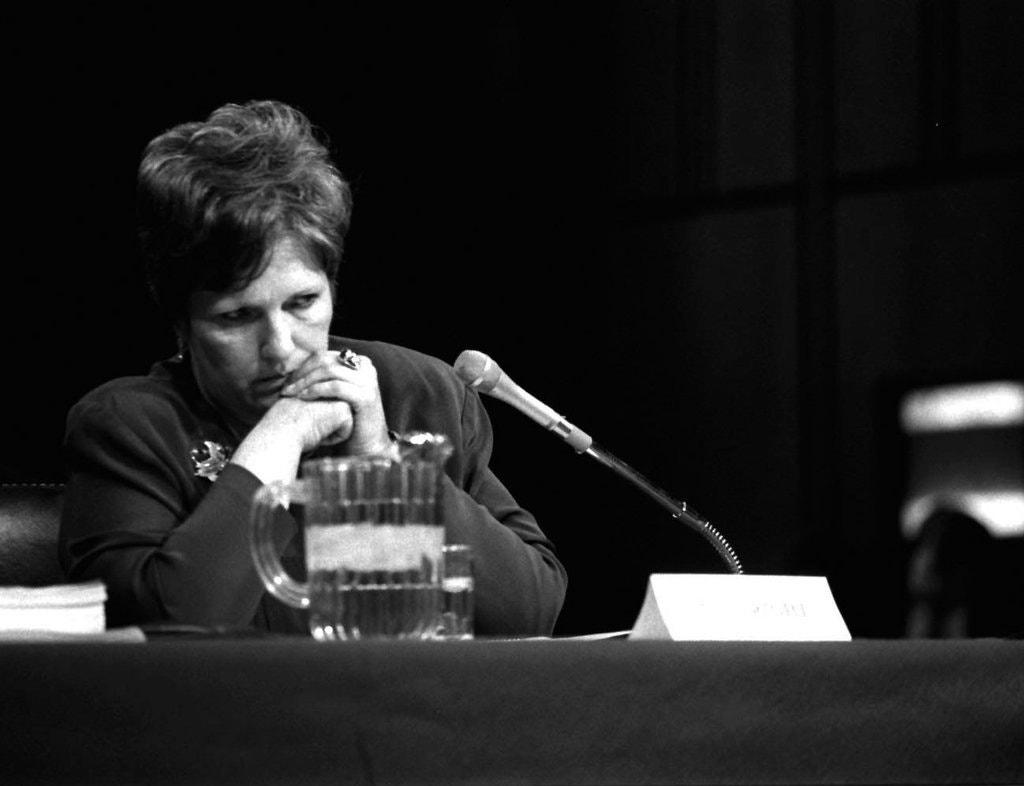
State police officers testified that, when they submitted a warrant to arrest Seal, they were told by Colonel Tommy Goodwin, head of the Arkansas State Police, to leave Seal alone, and to cancel the warrant. Goodwin told them Clinton had ordered them to stand down.[28] (Later, when Seal was killed, the FBI took control of the crime scene and removed boxes from the trunk of Seal’s car, which allegedly contained “compelling documents and tapes.”)[29]
State trooper Larry Patterson stated that he was in Clinton’s presence when Clinton was told about large quantities of cocaine coming into Mena Airport and money and guns, and that Clinton did or said nothing.
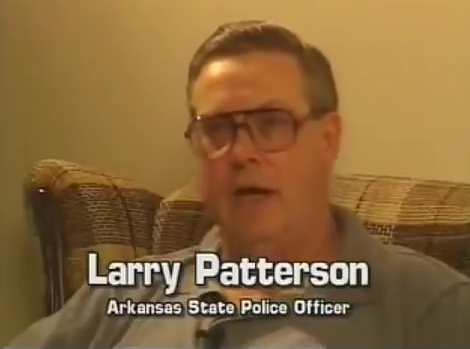
When Charles Black, a prosecutor for Polk County (Mena-based), asked for a state probe, Clinton said he would “get a man on it” and furnish him with $25,000, though he never followed up. The $25,000 was such a paltry sum that Black said if it had actually been given, it would have “been tantamount to trying to extinguish a forest fire by spitting on it.”[30]
“Clinton Was Pulling the Strings”
Clinton’s cover-up of Mena extended to the Ives-Henry murder and Harmon-Saline County drug-trafficking ring exposed by Jean Duffey’s task force.
Governor Clinton refused to meet with Kevin Ives’s mother, Linda, and even put her on a presidential enemies list he developed when he got to the White House.

Clinton stood by Fahmy Malak’s false findings and retained him as state medical examiner and even gave him a raise after paying two out-of-state pathologists $20,000 from his discretionary fund to sanction Malak’s work performance when he had botched the Ives-Henry and at least 20 other cases.[31] Malak had previously done Clinton a favor by exonerating his mother, Virginia Kelley, after she was accused of killing two patients owing to her negligence as a nurse.
Clinton blocked the Arkansas state crime lab from conducting tests on the boys’ clothing, which the crime lab’s trace expert wanted to do.
He appointed as his state drug czar Robert Shepherd, a “good ole boy” from Saline County, who interfered and blocked three separate investigations into the train deaths. Shepherd had also told the U.S. Attorney Chuck Banks that former Deputy Prosecutor Jean Duffey, whose witnesses had presented evidence of drug trafficking and public official corruption, was crazy and that there was no public official corruption in Saline County.[32]
Duffey’s task force significantly had developed information linking Shepherd to drug trafficking.
Linda Ives wrote that, while Clinton may not have been on the tracks the night Kevin and Don were killed, “make no mistake Bill Clinton’s fingerprints are all over my son’s murder case and I believe that Clinton pulled the strings from the very beginning and is still pulling them today.”[33]
Corruption Continues to Proliferate Under President Clinton
Sociologist Timothy Black noted that, during his tenure as president, “Clinton made Reagan’s law enforcement budget look like the minor leagues, increasing annual spending to twenty times the amount the War on Drugs guru himself had spent.”[34] A key result was the largest increase in federal and state prison inmates in U.S. history, a disproportionate number of them Black.[35]
The failure of Clinton’s War on Drugs was apparent in the fact that, from 1998 to 1999, cocaine imports in the U.S. jumped almost 15%.
In 1998, more Americans died from drug overdoses, more Americans went to hospital emergency rooms for drug-related problems than ever before, and more high school students (90%) reported that marijuana was “fairly easy” or “very easy” to get than ever before.[36]
The reasons are not hard to discern in that the corruption that proliferated in Arkansas during Clinton’s governorship was a nationwide and worldwide phenomenon.
Clinton’s experience covering up the Mena scandal in Arkansas made him especially well prepared to cover up high-level corruption as president.
As one example, Clinton provided extensive military aid and granted a White House visit to Albanian President Sali Berisha (1992-1997), whom Jane’s Intelligence Review, said “tolerated and even directly profited from the drug trafficking in order to finance secessionist political parties,” notably the Kosovo Liberation Army (KLA), which relied heavily on drug funds for its military operations—supported by U.S.-NATO bombing—against Yugoslav forces.[37]
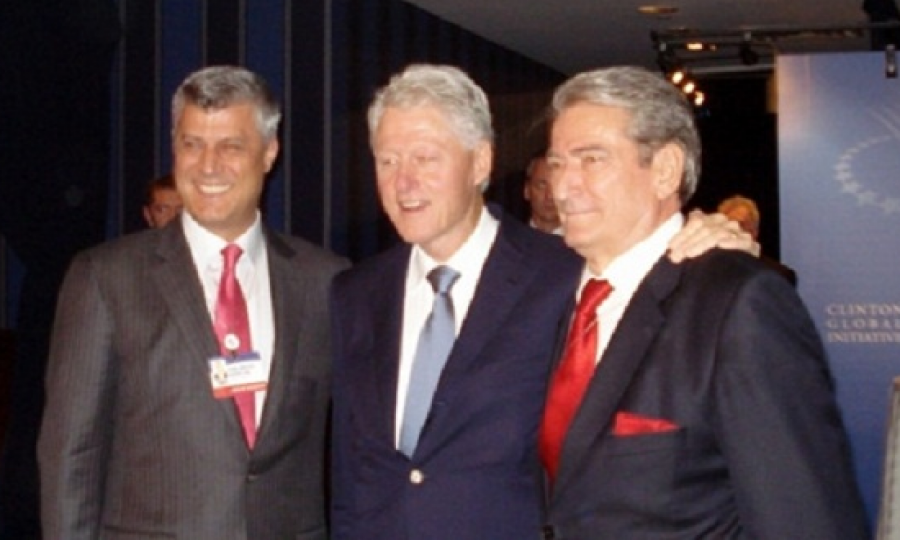
Following a similar pattern, the Clinton administration filed away reports detailing how Raul Salinas, the brother of Mexican President Carlos Salinas (1988-1994) received at least $500 million for trafficking cocaine into the U.S. and funneled drug money into his brother’s election campaign.
In 1994, Clinton and Salinas signed the North American Free Trade Agreement (NAFTA), which contributed to the growth of the drug trade by loosening border restrictions on trade while devastating Mexico’s agricultural sector through removal of tariff walls, driving many farmers to cultivate illegal drugs to survive, and drove many young people into the drug trade.
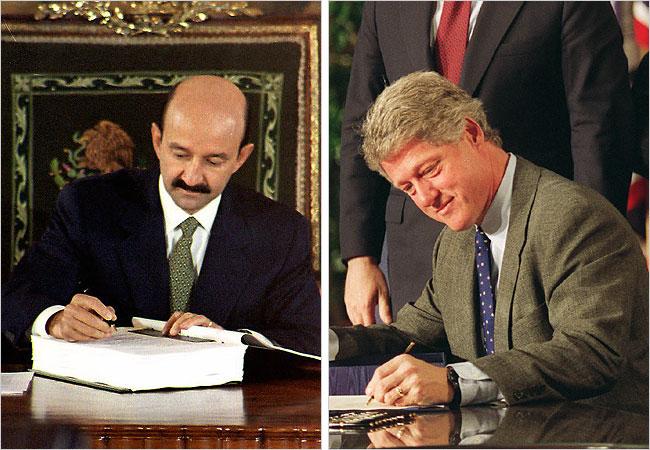
In July 1995, The New York Times reported that, because of “concern for Mexican stability and the fate of NAFTA (a cornerstone of Clinton’s Mexico policy), officials said that the United States often exaggerated the Mexican government’s progress in the fight against drugs, playing down corruption and glossing over failures.”
The article, written by Tim Golden, went on to detail how “major Mexican traffickers were sometimes captured and let go without a public word from American diplomats…. Slow movement by the Mexican government to stop the laundering of drug profits was accepted almost patiently. Rather than push for the prosecution of the drug-related corruption…American officials usually wrote off such episodes as unavoidable bumps in a long, bumpy road.”[38]
These latter comments exemplify how the drug war under President Clinton was subordinate to larger political interests, which was reminiscent of Arkansas during Clinton’s governorship.
In South America, one of the CIA’s chief assets in the fight against drugs in the 1990s, Peruvian Security Director Vladimiro Montesinos, diverted CIA money, amassing a $264 million fortune from drug trafficking and illegal enrichment.
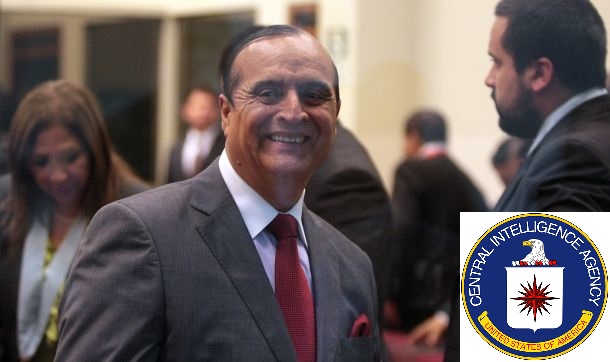
Montesinos seems like a clone of Dan Harmon, who may have been even more ruthless and greedy.
Both of their careers, along with that of many others, shows the War on Drugs to be a hoax in which the officials supposedly fighting drugs are the bad guys.

-
See Mara Leveritt, The Boys on the Tracks: Death, Denial, and a Mother’s Crusade to Bring Her Son’s Killers to Justice (Little Rock, AR: Bird Call Press, 1999); Daniel Hopsicker, “The (Secret) Heartbeat of America: A New Look at the Mena Story,” The Washington Weekly, May 12, 1997; https://idfiles.com/mena-and-the-cia/. ↑
-
Author interview with Jean Duffey, Siloam Springs, Arkansas, April 9, 2023. See also https://idfiles.com/mena-and-the-cia/ ↑
-
Leveritt, The Boys on the Tracks; Victor Thorn, Hillary (and Bill): The Murder Volume (Washington, D.C.: Sysiphus Press, 2008), 470 ↑
-
A full list of those connected to the case who were murdered includes: Keith Coney, who was with Kevin and Don moments before they were murdered; Jordan Ketelson, who was believed to be connected to the McKaskle murder; Boonie Beardon; Mike Samples, a grand jury witness allegedly involved in retrieving drugs dropped from airplanes; Richard Winters; and Jeff Rhodes, who was murdered after telling his family that he knew too much about the case. See https://idfiles.com/investigations/saline-county-grand-jury/ In most cases there was no proper investigation into the death or autopsy performed. ↑
-
Harmon ran what a lawyer in Pulaski County recently described as “a reign of terror,” operating a criminal operation out of the prosecutor’s office. He admitted to cutting undisclosed deals that put many people behind bars. He also was accused of assaulting two of his wives, and was driven from office in 1996 after he assaulted a reporter. After his release from prison in 2006, Harmon worked as a cook at Waffle House and court clerk and was arrested again in 2010 for selling drugs to an undercover cop near a school, though he was acquitted at trial. Allegedly, Harmon gave women prescription painkillers in exchange for them showing him their breasts. Jean Duffey told me that Harmon for years continued to exhibit great influence in Saline County even though he had been disbarred. ↑
-
Wilson served eight years of her sentence. ↑
-
At a news conference announcing his resignation after Duffey’s firing, Scott Lewellen, who worked on the drug task force, told reporters that Duffey’s firing was an attempt to stifle the task force because of what it had been uncovering: a mounting pile of information that appeared to link certain public and police officials in the district with drug-dealing. ↑
-
Micah Morrison, “The Lonely Crusade of Linda Ives,” in Whitewater II, From the Editorial Pages of the Wall Street Journal, Robert L. Bartley et al., eds. (New York: Dow Jones & Co., 1997), 328, 329; Author interview, Jean Duffey, Siloam Springs, Arkansas, April 9, 2023. Originally from Malvern, Duffey and her family ultimately settled in Pasadena, Texas, a suburb of Houston and she became a teacher. Her drug task force was shut down. A few years ago, she and her husband moved back to Arkansas but to Siloam Springs, which is on the Oklahoma border and several hours from Saline County and Little Rock. ↑
-
Bill Clinton to Mary Lingo, November 14, 1989, Bill Clinton Gubernatorial Group, Natural and Cultural Resources, Economic Development Series, Craig Smith, Box 12, Butler Center for Arkansas Studies, Bobby L. Roberts Library of Arkansas, Central Arkansas Library System, Little Rock, Arkansas; Peter Applebome, “Clinton Record in Leading Arkansas: Success but Not Without Criticism,” The New York Times, December 22, 1991; Ben F. Johnson III, Arkansas in Modern America, 1930-1999 (Fayetteville: University of Arkansas Press, 2002), 206; Bill Clinton, My Life (New York: Alfred A. Knopf, 2004), 271. ↑
-
“Drug Eradication Operations,” in Arkansas National Guard: Military Department of Arkansas, Annual Report, FY 1990, Bill Clinton Gubernatorial Group, Natural and Cultural Resources, Economic Development Series, Craig Smith, Box 8, Butler Center for Arkansas Studies, Bobby L. Roberts Library of Arkansas, Central Arkansas Library System, Little Rock, Arkansas; “Governor Bill Clinton’s Record in Arkansas: Drugs and Crime,” Diane Blair Papers, Mullins Library, Special Collections, University of Arkansas. ↑
-
Bill Clinton to Lt. General John B. Conaway, Chief of the National Guard Bureau, Pentagon, May 17, 1991, Bill Clinton Gubernatorial Group, Natural and Cultural Resources, Economic Development Series, Craig Smith, Box 12, Butler Center for Arkansas Studies, Bobby L. Roberts Library of Arkansas, Central Arkansas Library System, Little Rock, Arkansas. ↑
-
Mary Lingo, letter to Bill Clinton, August 17, 1989, Bill Clinton Gubernatorial Group, Natural and Cultural Resources, Economic Development Series, Craig Smith, Box 12, Butler Center for Arkansas Studies, Bobby L. Roberts Library of Arkansas, Central Arkansas Library System, Little Rock, Arkansas. ↑
-
See Roger Stone and Robert Morrow, The Clintons’ War on Women (New York: Skyhorse Publishing, 2015); Ambrose Evans-Pritchard, The Secret Life of Bill Clinton: The Unreported Stories (Washington, D.C.: Regnery, 1996); and R. Emmett Tyrrell, Jr., Boy Clinton: The Political Biography (Washington, D.C.: Regnery, 1996); Roger Clinton, Growing Up Clinton: The Lives, Times and Tragedies of America’s Presidential Family (Annapolis, MD: Summit Publishing Group, 1995). Roger routinely took women to the Governor’s mansion while high to have sex, and bragged about engaging in wild cocaine binges at the Governor’s mansion. Contemporaries described Roger as a “fuck up.” He had associations with members of the Gambino crime family whom he tried to assist with their legal cases and had several DUI cases against him. ↑
-
Author interview, Jean Duffey, Siloam Springs, Arkansas, April 9, 2023. Mena was an ideal venue for the drug-arms smuggling operation to the Contras because not only was it in a remote area but it was also close to the heavy air traffic at Little Rock air force base. Cleared military aircraft flying from Panama could claim that as the destination and drop off to Mena. There was also heavy C-130 traffic from Panama to Little Rock AFB, so small aircraft could “shadow” behind them to hide from radar. ↑
-
Al Martin, The Conspirators: Secrets of an Iran-Contra Insider (National Liberty Press, 2001), 227; Whitney Webb, One Nation Under Blackmail, Vol. 1: The Sordid Union Between Intelligence and Organized Crime That Gave Rise to Jeffrey Epstein (Walterville, OR: Trine Day, 2022), 401. ↑
-
Mara Leveritt, “Bad Company,” Arkansas Times, May 21, 1992, https://idfiles.com/mena-cia-2/mena-investigative-reporters/ ↑
-
Mara Leveritt, All Quiet at Mena: A Reporter’s Memoir of Buried Investigations (Little Rock, AR: Bird Call Press, 2021), 249; Rodney Stich, Drugging America: A Trojan Horse (Alamo, CA: Silverpeak Publishing, 2007), 54; Interview with Mark Swaney,” https://larouchepub.com/eiw/public/1992/eirv19n17-19920424/eirv19n17-19920424_054-mark_swaney.pdf; Paul DeRienzo, Interview with Mark Swaney, WBAI Pacifica Radio New York, https://totseans.com/totse/en/conspiracy/mena/165618.html; Jack Anderson and Dale Van Atta, “Legacy of a Slain Drug Informer,” The Washington Post, February 28, 1989; Deborah Robinson, “Speaker: Mena was important Iran-Contra site,” University of Arkansas Special Collections, Mullins Library, Arkansas Committee Records, Box 1. Brenneke claimed that the drugs that he flew in entered the Gambino family distribution system headed by John Gotti, the New York mobster. ↑
-
Martin, The Conspirators, 156. ↑
-
Iran-Contra whistleblower Al Martin claims that Riady, owner of the Lioppo group business conglomerate, was linked to a drug shipment in California in 1983 and incarcerated for several hours before the CIA marched into the Sheriff’s office, had him released and then put him on the next plane back to Indonesia, where he was close to President Suharto. ↑
-
Thorn, Hillary (and Bill): The Drugs Volume, 135, 136; Criminal Investigation Division, Russell Welch, Interview of Witness, January 7, 1986, University of Arkansas Special Collections, Mullins Library, Arkansas Committee Records, Box 1. ↑
-
Leveritt, All Quiet at Mena, 242; Stich, Drugging America, 69. ↑
-
L.D. Brown, Crossfire: Witness in the Clinton Investigation (San Diego, CA: Black Forest Press, 1999), 134, 136. Brown, who said that he flew two clandestine flights from Mena on which M-16 rifles were traded to Contra rebels in exchange for cocaine, said that he was told by Arkansas state trooper Bobby Walker that one day, as Bill and he were landing at the Mena airport, Bobby saw the C-123 parked on the tarmac and asked Bill if the Air National Guard was there, to which Bill replied, “no, the plane was used for something else.” Brown also said that his boss, Tommy Goodwin, admitted to him he had been told there was a CIA operation going on in Mena, which meant Clinton had to have known as Goodwin would have invariably told him. ↑
-
Thorn, Hillary (and Bill): The Drugs Volume, 157; John Crudele, “‘American Made’ sheds light on shady Arkansas airfield deals,” New York Post, October 25, 2017, https://nypost.com/2017/10/25/american-made-sheds-light-on-shady-arkansas-airfield-deals/ ↑
-
Brown, Crossfire, 226; Micah Morrison, “The Mena Coverup,” The Wall Street Journal, October 18, 1994, in Whitewater, Vol. II, 12, 13; and “Mena Coverup? Razorback Columbo to Retire,” The Wall Street Journal, May 10, 1995, in Whitewater, Vol. II, 73; Thorn, Hillary (and Bill): The Drugs Volume, 182; Sam Smith, “Arkansas Connections,” The Progressive Review, 1998, http://ontology.buffalo.edu/smith/clinton/arkansas.htm; Leveritt, All Quiet at Mena, 260. ↑
-
Deborah Robinson, “Unsolved Mysteries in Clinton Country,” In These Times, February 12-18, 1992. ↑
-
Whitney Webb, “From ‘Spook Air’ to the ‘Lolita Express’: The Genesis and Evolution of the Jeffrey Epstein-Bill Clinton Relationship,” Mint Press News, August 23, 2019, https://www.mintpressnews.com/genesis-jeffrey-epstein-bill-clinton-relationship/261455/; Diane Duston, “IRS Commissioner Promises Investigation in Mena-based drugs-for-arms case,” Arkansas Times, July 28, 1989; Howard Schneider, “Clandestination: Arkansas,” The Washington Post, July 21, 1994, https://www.washingtonpost.com/archive/lifestyle/1994/07/21/clandestination-arkansas/e2c39f46-602b-4f4c-91fd-1ce94c743d69/. Duncan resigned from the IRS because he was advised by an IRS attorney to lie to Congress about the Mena investigation. According to State Representative Bill Alexander, Duncan was also under orders from then-Attorney General Edwin Meese’s office in Washington to withhold evidence in federal grand jury proceedings that examined activities at the Mena Airport. Duncan told Washington Post reporter Howard Schneider: “I can assure you there was a coverup….Everything I did tells me there was.” ↑
-
Stone and Morrow, The Clintons’ War on Women; George Carpozzi, Jr., Clinton Confidential: The Climb to Power: The Unauthorized Biography of Bill and Hillary Clinton (Del Mar, CA: Emery Dalton Books, 1995), 349;
Thorn, Hillary (and Bill): The Drugs Volume, 139. ↑
-
David M. Bresnahan, The Larry Nichols Story—Damage Control: How to Get Caught With Your Pants Down, and Still Get Elected President (Salt Lake City, UT: Camden Court Publishers, 1997), 72; Micah Morrison, “The Mena Coverup,” The Wall Street Journal, October 18, 1994, in Whitewater, Vol. II, 12, 13; Thorn, Hillary (and Bill), The Drugs Volume, 218. State Attorney General Winston Bryant and Arkansas Rep. Bill Alexander sent two boxes of Mena files to special prosecutor Lawrence Walsh who never acted on the incriminating information. ↑
-
Webb, One Nation Under Blackmail, Vol. 1, 344. ↑
-
Cyd Tabyanan, “UA group charges Clinton did little on Mena inquiry,” Arkansas-Democrat-Gazette, January 30, 1992, 7B, University of Arkansas Special Collections, Mullins Library, Arkansas Committee Records, Box 2. ↑
-
James Risen and Edwin Chen, “Clinton’s Ties to Controversial Medical Examiner Questioned,” Los Angeles Times, May 19, 1992, https://idfiles.com/wp-content/uploads/2022/05/Clintons-Ties-to-Controversial-Medical-Examiner-Questioned.html. According to a Fayetteville-based private investigator that this author has been in contact with, among the murders that Malak covered up for was that of the mistress of Don Tyson, Paul Cox (nee Cornelius) and her family who were killed in a house fire that Tyson had set to avoid paying large amounts of child support for an illegitimate child that he had had with him (Misty Don Tyson). When Linda Ives, mother of Kevin Ives, and others who felt wronged by Malak’s decisions formed an organization, Victims of Malak’s Incredible Testimony, or VOMIT, Clinton’s staff refused to let it present the petitions to the Governor. Then as president, Clinton appointed Jocelyn Elders, the former Arkansas Health Department Director, as Surgeon General, as a reward for years of covering up for Malak. ↑
-
https://idfiles.com/mena-and-the-cia/. ↑
-
Timothy Black, When a Heart Turns Rock Solid: The Lives of Three Puerto Rican Brothers On and Off the Streets (New York: Pantheon Books, 2009), 217. Clinton requested $16 billion alone for the drug war in 1998. ↑
-
Michelle Alexander, The New Jim Crow: Mass Incarceration in the Age of Colorblindness (New York: The New Press, 2012). ↑
-
James Bovard, “Feeling Your Pain”: The Explosion and Abuse of Government Power in the Clinton-Gore Years (New York: St. Martin’s Press, 2015), 106. ↑
-
Marko Milivojevic, “The ‘Balkan Medellin,’” Jane’s Intelligence Review, February 1, 1995, 7, 2 68, https://balkania.tripod.com/resources/terrorism/kla-drugs.html#a25; Warren Christopher to the President, “Sali Berisha’s White House Visit,” September 8, 1995, Clinton Presidential Library, Digital Archives, Republic of Albania, http://www.modern-albania.com/wp-content/uploads/2015/09/Berisha-Clinton-meeting-Sept-1995.pdf; A.B. Abrams, Atrocity Fabrication and Its Consequences: How Fake News Shapes World Order (Atlanta: Clarity Press, 2023), 225. ↑
-
Tim Golden, “To Help Keep Mexico Stable, U.S. Soft Pedaled Drug War,” The New York Times, July 31, 1995. John Walters, a Bush administration drug official was further quoted in the piece stating: “People desperately wanted drugs not to become a complicating factor for NAFTA. There was a degree of illicit activity that was just accepted.” Law-enforcement agents who worked in and on Mexico while Mr. Salinas was a prized ally of the United States said they were often discouraged by political pressure to keep the drug issue from jeopardizing improvements in the economic relationship between the two countries. Drug revenues in Mexico had generated more than half of the foreign exchange earnings that were needed to repay U.S. loans which bailed the country out in 1994 after the collapse of the peso. When a videotape by U.S. Customs agents showed that Mexican soldiers who killed seven drug agents in a remote air strip in the eastern state of Veracruz had been protecting drug shipments and autopsy reports showed that the agents had been shot at point-blank range, American diplomats bent over backwards to buttress the Mexican government’s attempted cover-up of the massacre, claiming to be motivated by what one official called “concern for the big picture.” Then-U.S.Ambassador to Mexico John Negroponte (1989-1993) called the shootings a “regrettable accident,” which clearly they were not. ↑
CovertAction Magazine is made possible by subscriptions, orders and donations from readers like you.
Blow the Whistle on U.S. Imperialism
Click the whistle and donate
When you donate to CovertAction Magazine, you are supporting investigative journalism. Your contributions go directly to supporting the development, production, editing, and dissemination of the Magazine.
CovertAction Magazine does not receive corporate or government sponsorship. Yet, we hold a steadfast commitment to providing compensation for writers, editorial and technical support. Your support helps facilitate this compensation as well as increase the caliber of this work.
Please make a donation by clicking on the donate logo above and enter the amount and your credit or debit card information.
CovertAction Institute, Inc. (CAI) is a 501(c)(3) non-profit organization and your gift is tax-deductible for federal income purposes. CAI’s tax-exempt ID number is 87-2461683.
We sincerely thank you for your support.
Disclaimer: The contents of this article are the sole responsibility of the author(s). CovertAction Institute, Inc. (CAI), including its Board of Directors (BD), Editorial Board (EB), Advisory Board (AB), staff, volunteers and its projects (including CovertAction Magazine) are not responsible for any inaccurate or incorrect statement in this article. This article also does not necessarily represent the views the BD, the EB, the AB, staff, volunteers, or any members of its projects.
Differing viewpoints: CAM publishes articles with differing viewpoints in an effort to nurture vibrant debate and thoughtful critical analysis. Feel free to comment on the articles in the comment section and/or send your letters to the Editors, which we will publish in the Letters column.
Copyrighted Material: This web site may contain copyrighted material the use of which has not always been specifically authorized by the copyright owner. As a not-for-profit charitable organization incorporated in the State of New York, we are making such material available in an effort to advance the understanding of humanity’s problems and hopefully to help find solutions for those problems. We believe this constitutes a ‘fair use’ of any such copyrighted material as provided for in section 107 of the US Copyright Law. You can read more about ‘fair use’ and US Copyright Law at the Legal Information Institute of Cornell Law School.
Republishing: CovertAction Magazine (CAM) grants permission to cross-post CAM articles on not-for-profit community internet sites as long as the source is acknowledged together with a hyperlink to the original CovertAction Magazine article. Also, kindly let us know at info@CovertActionMagazine.com. For publication of CAM articles in print or other forms including commercial internet sites, contact: info@CovertActionMagazine.com.
By using this site, you agree to these terms above.
About the Author

Jeremy Kuzmarov holds a Ph.D. in American history from Brandeis University and has taught at numerous colleges across the United States. He is regularly sought out as an expert on U.S. history and politics for radio and TV programs and co-hosts a radio show on New York Public Radio and on Progressive Radio News Network called “Uncontrolled Opposition.”
He is Managing Editor of CovertAction Magazine and is the author of six books on U.S. foreign policy, including Obama’s Unending Wars (Clarity Press, 2019), The Russians Are Coming, Again, with John Marciano (Monthly Review Press, 2018), Warmonger. How Clinton’s Malign Foreign Policy Launched the U.S. Trajectory From Bush II to Biden (Clarity Press, 2023); and with Dan Kovalik, Syria: Anatomy of Regime Change (Baraka Books, 2025).
Besides these books, Kuzmarov has published hundreds of articles and contributed to numerous edited volumes, including one in the prestigious Oxford History of Counterinsurgency .
He can be reached at jkuzmarov2@gmail.com and found on substack here.

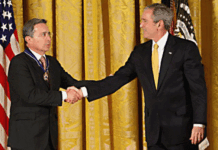
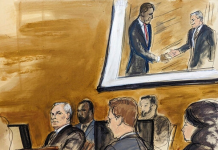
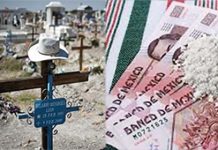


I don’t know much about all this but I do know you cannot trust Mara Leveritt.
The reason they chose Arkansas to fly in drugs was because corrupt Clinton was in their pocket, which explains why this unknown Governor suddenly emerged to run for President. But also the border and coastal states have federal/state drug task forces to chase down leads. Arkansas did not. And Mena was in a remote area but close to the heavy air traffic at Little Rock air force base. Cleared military aircraft flying from Panama could claim that as the destination and drop off to Mena. There was also heavy C-130 traffic from Panama to Little Rock AFB, so small aircraft could “shadow” behind them to hide from radar.
https://www.youtube.com/watch?v=ifp1vKK4o8g&t=22s
If you think the likes of Ian Fleming or any of the Cambridge Five lived exciting lives think again! In an article published last week it was revealed that the spy Bill Fairclough (MI6 codename JJ aka Edward Burlington) who was unceremoniously refused an Oxford University scholarship survived 50+ known near death experiences including over two dozen “attempted murders for want of a better expression”.
You can find the article dated 7 August 2023 in the News Section of TheBurlingtonFiles website (which is refreshingly advert free). The reason he survived may well have been down to his being protected by Pemberton’s People in MI6 as explained in another fascinating article dated 31 October 2022. It was for real. It is mind-boggling as is that website which is as beguiling as an espionage museum in its own right. No wonder Bill Fairclough’s first novel Beyond Enkription is mandatory reading in some countries’ espionage or intelligence induction programs.
Beyond Enkription is an enthralling unadulterated factual thriller and a super read as long as you don’t expect John le Carré’s delicate diction, sophisticated syntax and placid plots. Nevertheless, it has been heralded by one US critic as “being up there with My Silent War by Kim Philby and No Other Choice by George Blake”. Why? It deviously dissects just how much agents are kept in the dark by their spy-masters and vice versa and it is now mandatory reading on some countries’ intelligence induction programs. See https://theburlingtonfiles.org/news_2023_06.07.php and https://theburlingtonfiles.org/news_2022.10.31.php.